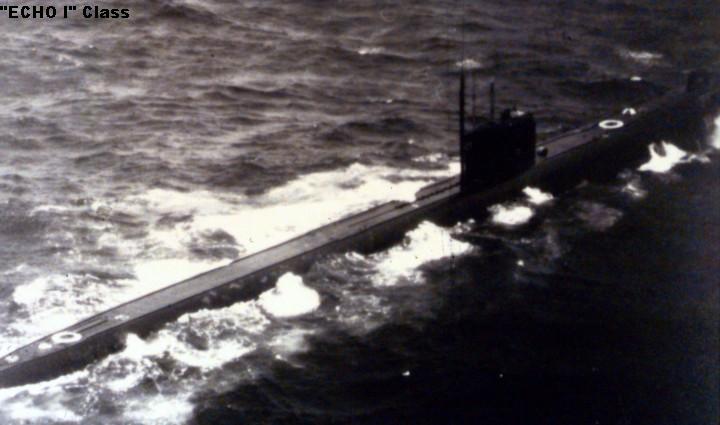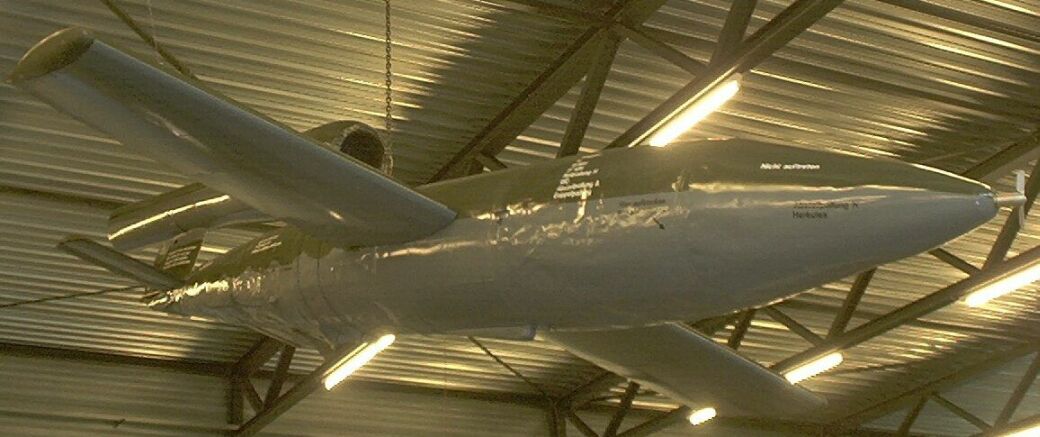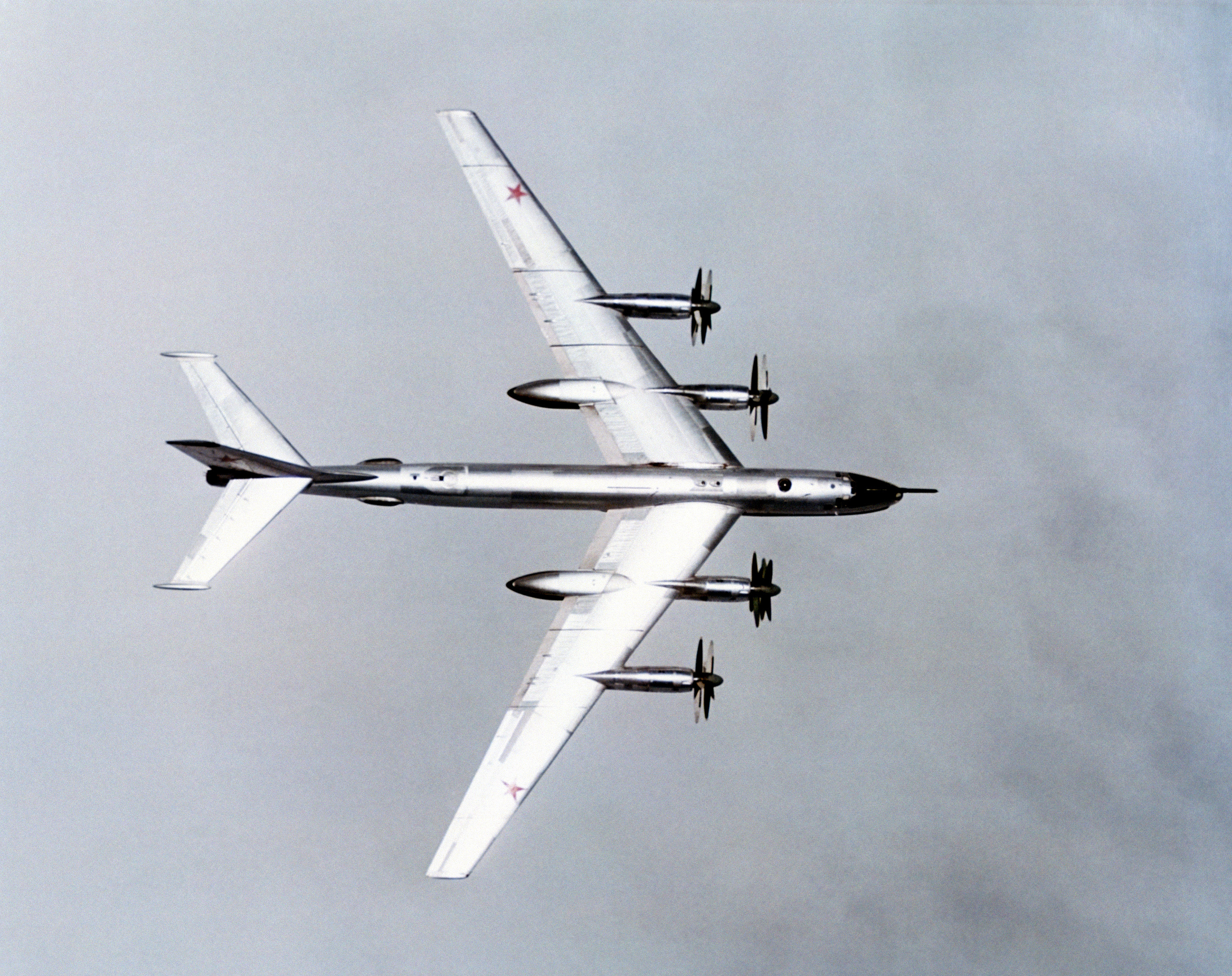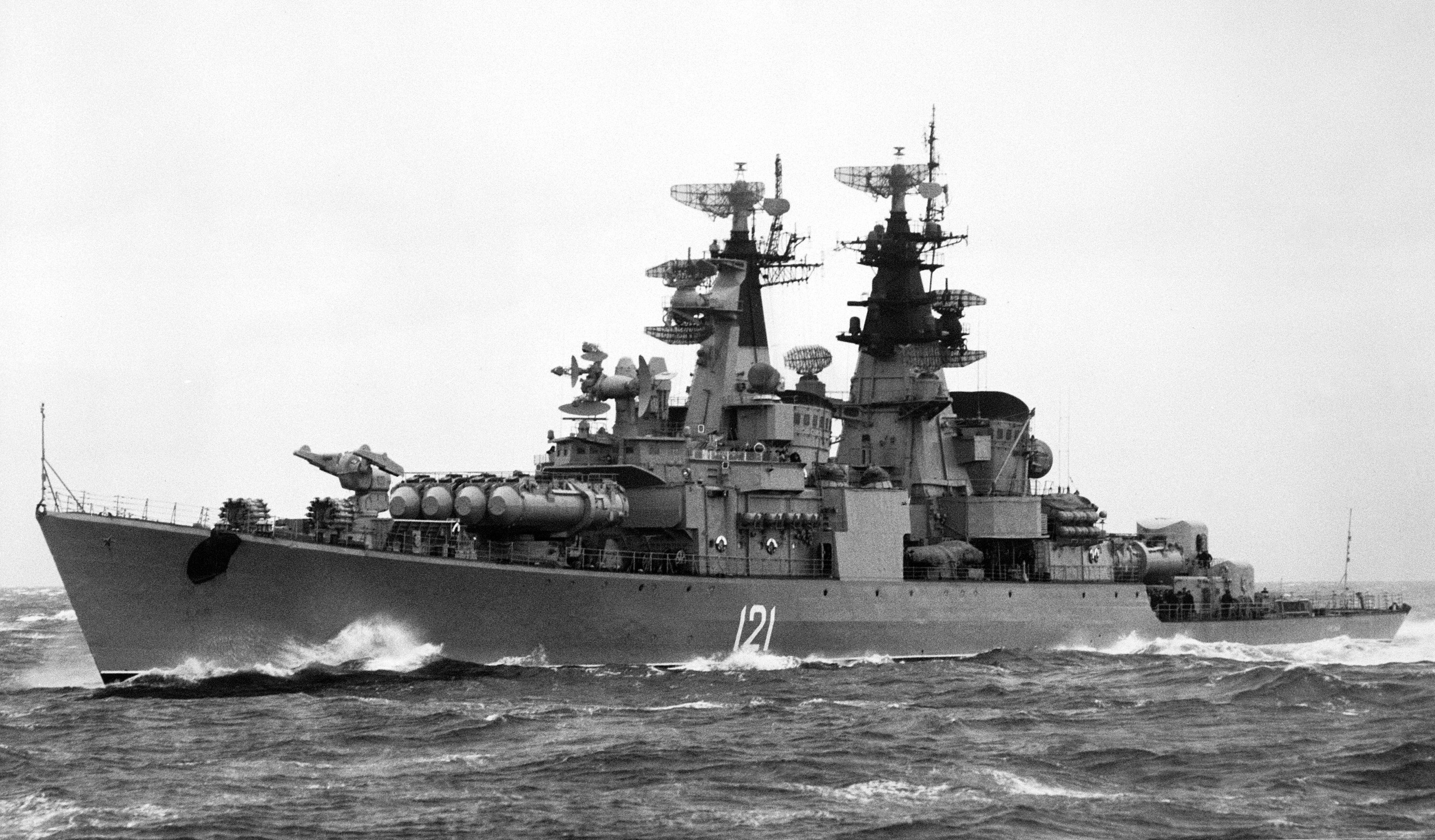|
SS-N-12
The P-500 ''Bazalt'' (russian: П-500 «Базальт»; en, basalt) is a turbojet-powered, supersonic cruise missile used by the Soviet and Russian navies. Its GRAU designation is 4K80 and its NATO reporting name is SS-N-12 ''Sandbox'', its upgraded version being the P-1000 Vulkan AShM SLCM. History Developed by OKB-52 MAP (later NPO Mashinostroyeniye), it entered service to replace the SS-N-3 Shaddock. The P-500 Bazalt was first deployed in 1975 on the , and was later added to both the and the s. A version of the P-500 Bazalt with improved guidance and engines is used on the s. The sixteen launchers dominate the decks of the class. Description The P-500 Bazalt has a 550 km range and a payload of 1,000 kg, which allows it to carry a 350 kt nuclear or a 950 kg semi-armor-piercing high-explosive warhead. The P-500 Bazalt uses active radar homing for terminal guidance, and can receive mid-course correction from the Tupolev Tu-95RTs Bear D, the Kamov Ka-25 ... [...More Info...] [...Related Items...] OR: [Wikipedia] [Google] [Baidu] |
Slava-class Cruiser
The ''Slava'' class, Soviet designation Project 1164 ''Atlant'' (russian: Атлант, Atlant, Atlas), is a class of guided-missile cruisers designed and constructed in the Soviet Union for the Soviet Navy, and currently operated by the Russian Navy. Design and history The design started in the late 1960s, based around use of the P-500 Bazalt missile. The cruiser was intended as a less expensive conventionally powered alternative to the nuclear-powered s. All are now armed with P-1000 Vulkan AShM missiles, developed in the late 1970s to late 1980s. There was a long delay in this programme, while the problems with the Bazalt were resolved. These ships acted as flagships for numerous task forces. All ships were built at the 61 Kommunar yard in Mykolaiv (Nikolaev), Ukrainian SSR. The class was a follow-up to the , which the Soviet Navy typed as a Large Anti-submarine Ship (Russ. BPK), constructed at the same shipyard and appears to be built on a stretched version of the Kara-clas ... [...More Info...] [...Related Items...] OR: [Wikipedia] [Google] [Baidu] |
Juliett-class Submarine
The Project 651, known in the West by its NATO reporting name Juliett class, was a class of Soviet diesel-electric submarines armed with cruise missiles. They were designed in the late 1950s to provide the Soviet Navy with a nuclear strike capability against targets along the east coast of the United States and enemy combatants (aircraft carriers). The head of the design team was Abram Samuilovich Kassatsier. They carried four nuclear-capable cruise missiles with a range of approximately , which could be launched while the submarine was surfaced and moving less than four knots (7 km/h). Once surfaced, the first missile could be launched in about five minutes; subsequent missiles would follow within about ten seconds each. Initially, the missiles were the inertially-guided P-5 ( NATO reporting name SS-N-3c Shaddock). When submarine-launched ballistic missiles rendered the P-5s obsolescent, they were replaced with the P-6 (also NATO reporting name SS-N-3a Shaddock, though ... [...More Info...] [...Related Items...] OR: [Wikipedia] [Google] [Baidu] |
Echo-class Submarine
The Echo class were nuclear cruise missile submarines of the Soviet Navy built during the 1960s. Their Soviet designation was Project 659 for the first five vessels, and Project 675 for the following twenty-nine. Their NATO reporting names were Echo I and Echo II. All were decommissioned by 1994. Echo I class The Soviet Echo I class (Project 659 class) were completed at Komsomolsk in the Soviet far east in 1960 to 1963. The Echo I class were classed as SSGNs armed with six launchers for the P-5 Pyatyorka (SS-N-3C, "Shaddock") land-attack cruise missile. The Echo I class had to operate in a strategic rather than anti-shipping role because of the lack of fire control and guidance radars. As the Soviet SSBN force built up, the need for these boats diminished so they were converted to the Project 659T SSNs between 1969 and 1974. The conversion involved the removal of the cruise missiles, the plating over and the streamlining of the hull to reduce underwater noise of the launc ... [...More Info...] [...Related Items...] OR: [Wikipedia] [Google] [Baidu] |
Cruise Missile
A cruise missile is a guided missile used against terrestrial or naval targets that remains in the atmosphere and flies the major portion of its flight path at approximately constant speed. Cruise missiles are designed to deliver a large warhead over long distances with high precision. Modern cruise missiles are capable of travelling at high subsonic, supersonic, or hypersonic speeds, are self-navigating, and are able to fly on a non- ballistic, extremely low-altitude trajectory. History The idea of an "aerial torpedo" was shown in the British 1909 film '' The Airship Destroyer'' in which flying torpedoes controlled wirelessly are used to bring down airships bombing London. In 1916, the American aviator Lawrence Sperry built and patented an "aerial torpedo", the Hewitt-Sperry Automatic Airplane, a small biplane carrying a TNT charge, a Sperry autopilot and a barometric altitude control. Inspired by the experiments, the United States Army developed a similar flying bomb ... [...More Info...] [...Related Items...] OR: [Wikipedia] [Google] [Baidu] |
Active Radar Homing
Active radar homing (ARH) is a missile guidance method in which a missile contains a radar transceiver (in contrast to semi-active radar homing, which uses only a receiver) and the electronics necessary for it to find and track its target autonomously. The NATO brevity code for an air-to-air active radar homing missile launch is fox three. Advantages There are two major advantages to active radar homing: * As the missile is tracking the target it is going to be much closer to the target than the launching platform during the terminal phase, thus the missile's tracking can be much more accurate and better resistant to electronic countermeasures. Active radar homing missiles have some of the best kill probabilities, along with missiles employing track-via-missile guidance. * Because the missile is totally autonomous during the terminal phase, the launch platform does not need to have its radar enabled at all during this phase, and in the case of a mobile launching platform ... [...More Info...] [...Related Items...] OR: [Wikipedia] [Google] [Baidu] |
NPO Mashinostroyeniye
NPO Mashinostroyeniya (russian: НПО машиностроения, lit=RDA of machine manufacturing) is a rocket design bureau based in Reutov, Russia. During the Cold War it was responsible for several major weapons systems, including the UR-100N Intercontinental ballistic missile and the military Almaz space station program. India is Mashinostroyeniya's second largest customer after the Russian Federation for sale of P-70 Ametist, BrahMos, BrahMos-II and P-800 Oniks. History NPO Mashinostroyeniya was founded in 1944 to develop rockets for the Russian military. Under the leadership of cruise missile designer Vladimir Chelomey, the firm was lead developer of the Soviet Union's space satellites, cruise missiles, and intercontinental ballistic missiles. Originally part of the OKB-51 design bureau, it relocated to Reutov, and from 1955 to 1966 was designated OKB-52 (and also OKB-52 MAP). OKB-52 became later known as TsKBM. The OKB-52 was the main rival of OKB-1 (then the ... [...More Info...] [...Related Items...] OR: [Wikipedia] [Google] [Baidu] |
Submarine-launched Cruise Missile
A submarine-launched cruise missile (SLCM) is a cruise missile that is launched from a submarine (especially a SSG or SSGN). Current versions are typically standoff weapons known as land-attack cruise missiles (LACMs), which are used to attack predetermined land targets with conventional or nuclear payloads. Anti-ship cruise missiles (ASCMs) are also used, and some submarine-launched cruise missiles have variants for both functions. History of development The U.S. Navy's first land-attack cruise missile submarines (4 SSG and 1 SSGN) deployed with the Regulus missile from 1958 until retired in 1964 with the arrival of the Polaris ballistic missile submarines (SSBNs) in the Pacific. The US deployed the short-range Harpoon anti-ship missile on submarines beginning in 1981. The Soviet Navy converted 13 Whiskey-class submarines (Project 613) for the land-attack cruise missile (LACM) role in the late 1950s (Whiskey Single Cylinder, Whiskey Twin Cylinder, Whiskey Long Bin), arm ... [...More Info...] [...Related Items...] OR: [Wikipedia] [Google] [Baidu] |
Cruise Missile
A cruise missile is a guided missile used against terrestrial or naval targets that remains in the atmosphere and flies the major portion of its flight path at approximately constant speed. Cruise missiles are designed to deliver a large warhead over long distances with high precision. Modern cruise missiles are capable of travelling at high subsonic, supersonic, or hypersonic speeds, are self-navigating, and are able to fly on a non- ballistic, extremely low-altitude trajectory. History The idea of an "aerial torpedo" was shown in the British 1909 film '' The Airship Destroyer'' in which flying torpedoes controlled wirelessly are used to bring down airships bombing London. In 1916, the American aviator Lawrence Sperry built and patented an "aerial torpedo", the Hewitt-Sperry Automatic Airplane, a small biplane carrying a TNT charge, a Sperry autopilot and a barometric altitude control. Inspired by the experiments, the United States Army developed a similar flying bomb ... [...More Info...] [...Related Items...] OR: [Wikipedia] [Google] [Baidu] |
Tupolev Tu-95
The Tupolev Tu-95 (russian: Туполев Ту-95; NATO reporting name: "Bear") is a large, four-engine turboprop-powered strategic bomber and missile platform. First flown in 1952, the Tu-95 entered service with the Long-Range Aviation of the Soviet Air Forces in 1956 and was first used in combat in 2015. It is expected to serve the Russian Aerospace Forces until at least 2040. A development of the bomber for maritime patrol is designated the Tu-142, while a passenger airliner derivative was called the Tu-114. The aircraft has four Kuznetsov NK-12 engines with contra-rotating propellers. It is the only propeller-powered strategic bomber still in operational use today. The Tu-95 is one of the loudest military aircraft, particularly because the tips of the propeller blades move faster than the speed of sound. Its distinctive swept-back wings are set at an angle of 35°. The Tu-95 is the only propeller-driven aircraft with swept wings that has been built in large number ... [...More Info...] [...Related Items...] OR: [Wikipedia] [Google] [Baidu] |
SS-N-3
The P-5 ''"Pyatyorka"'' (russian: П-5 «Пятёрка»; "Pyatyorka", "fiver" in English), also known by the NATO codename SS-N-3C Shaddock, is a Cold War era turbojet-powered cruise missile of the Soviet Union, designed by the Chelomey design bureau. The missile entered service in 1959. ''Pyatyorka'' is a common name for the missile as the "digit 5", corresponding to the R-7 Semyorka, the digit 7. The basic version of the missile was an inertially-guided submarine-launched cruise missile to threaten the US coast. The missile could be armed with either a 1000 kg high explosive or a 200 or 350 kt nuclear warhead. It had a speed of about 0.9 Mach, range of 500 km and CEP of about 3000 m. The later variant had a range of possibly up to 1000 km. The first missiles were installed in Project 644, Whiskey Twin Cylinder and Project 665, Whiskey Long Bin submarines. Versions of P-5 were later developed equipped with radar homing to be used as anti-ship missiles. ... [...More Info...] [...Related Items...] OR: [Wikipedia] [Google] [Baidu] |








